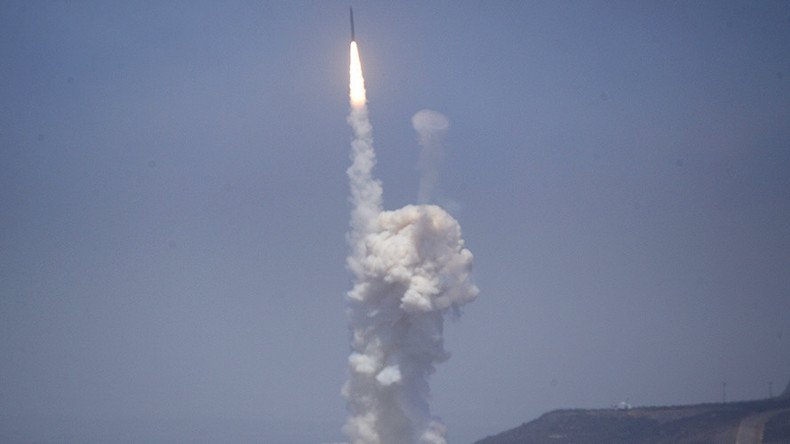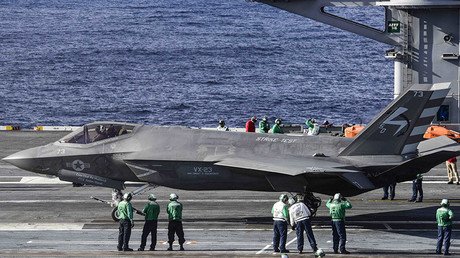US not safe against ballistic missiles, despite billions spent on defense system – govt report

The US is incapable of protecting itself from ballistic missile strikes launched by North Korea and Iran, despite spending billions to develop a defense system which remains unfinished, according to a report from the Government Accountability Office.
Although military leaders claim the Ground-Based Midcourse Defense (GMD) system could likely defend against “small numbers of simple ballistic missile threats launched from North Korea and Iran,” testing of the technology does not support that claim, according to the Tuesday report.
The Missile Defense Agency (MDA) “has not demonstrated through flight testing that it can defend the US homeland against the current missile defense threat,” the document states.
The agency “has not demonstrated several key homeland missile defense capabilities and is relying on high-risk acquisition practices to achieve its goal of fielding 44 interceptors by the end of 2017,” according to the report.
No proof has been provided to show that the system can intercept “a target representative of an intercontinental ballistic missile,” and it also remains to be seen whether the system is capable of “performing a salvo intercept where two or more interceptors are utilized against a single target.”
Instead, it has only demonstrated “a partial capability [to defend] against small numbers of simple ballistic missiles.”
The report notes that the “current GMD kill vehicle design and concept of operations represent a performance plateau that cannot be overcome without augmenting and replacing the kill vehicles in the current fleet of fielded interceptors.” It stated that “doing so would likely require a multibillion-dollar investment by MDA.”
But it also stated that if the agency hopes to improve the system, it “may experience challenges” in doing so.
If the Defense Department does hope to make the system better, it has failed to provide information on how such a plan will take place. According to the document, reports provided by the Pentagon “did not meet the requirements to include an evaluation of potential options for improving homeland ballistic missile defense.”
Figures disclosed in the report show that “tens of billions of dollars” have already been spent on the GMD system, and that billions more will be required to fix existing flaws.
The report also expressed concern that the system is being rushed, due to time constraints, which could result in faulty equipment.
The agency is “relying on a highly optimistic, aggressive schedule that overlaps development and testing with production activities, compromises reliability, extends risk to the warfighter, and risks the efficacy of flight testing,” the report states.
It's not the first time that the GMD has been confronted with issues. A report published in September 2014 revealed that the "kill system" had already undergone years of failed tests and had dozens of quality control issues. An April 2014 report said the system had achieved “mixed progress” in fiscal year 2013, due to delays and failures.













